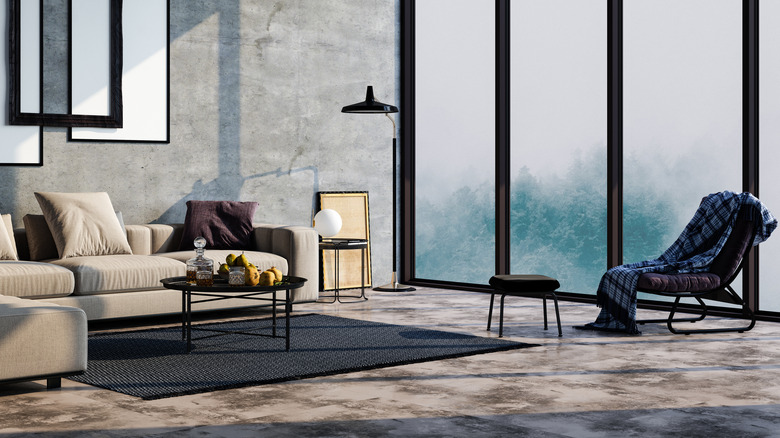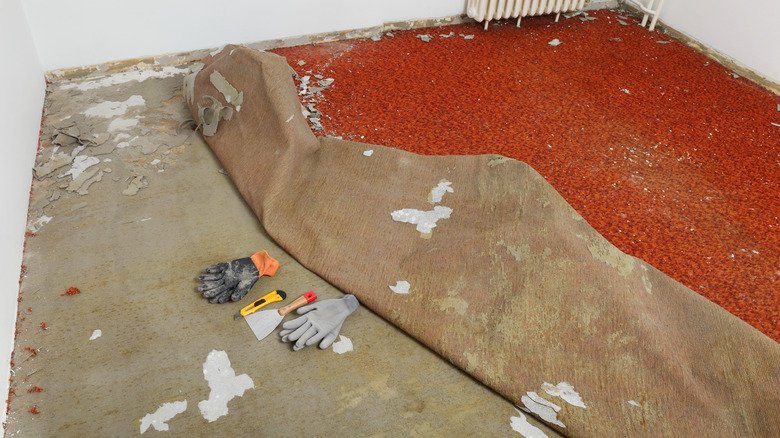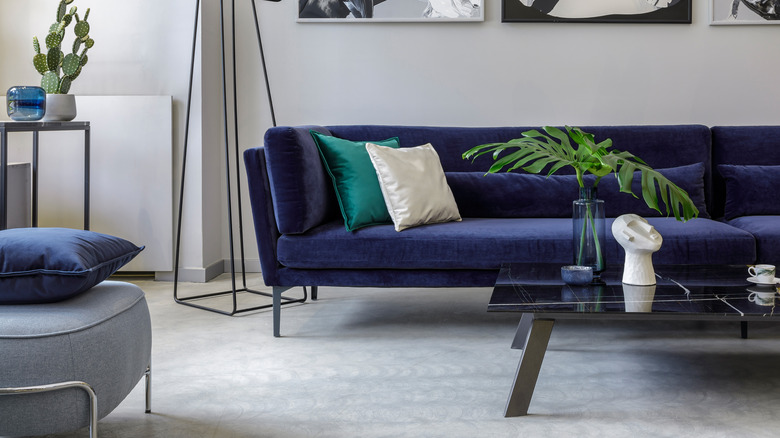What To Consider Before Making The Swap To Concrete Flooring
Concrete is an almost perfect option to serve as the flooring of any room in the home. It's one of the most durable, maintainable floors out there, capable of withstanding the heaviest of furniture, a large family's foot traffic, and even the messiest of pets. Cared for correctly, concrete floors can last well over 50 years.
If you're already leaning toward this type of flooring for a new home build or renovation, make the choice. The design options are endless, as you can customize to your heart's content with polishes, colors, and textures. The criticisms of concrete are easily manageable, too — yes, it can be cold, but there's always the option of rugs or stylish home footwear. If you really want to quiet the cold floor concerns, radiant heat below the floor is a great solution. Rugs and cushioned mats will also help with the hardness factor. That said, concrete isn't always the best choice for minimizing slip or fall hazards.
The only real challenge of concrete is the potential for moisture damage in the form of mold or cracks. A good contractor can help address these concerns through proper readings and tests. Be sure to bring up the topic before pouring. A proper sealant on the concrete can also alleviate moisture concerns, as will resealing the concrete every half decade or so, depending on wear and tear.
Swapping current floors for concrete
For those now wondering if there's perfectly good concrete hiding under their carpet or tile, pause before ripping. There are a few things to consider before making the swap. For one, floor removal can be an incredibly difficult task to undertake and one you can't go back on once you start. In older homes, there's also the concern of asbestos hiding underneath. Keep all of that in mind if you're thinking of making this part a DIY task.
In places where linoleum, vinyl, or tile is used, it's possible to skip the removal process and just lay concrete on top, but this only works if the existing floor is in proper condition — you'll likely need to consult a contractor. Carpet, however, has to be removed, and doing so requires more than just ripping up what's visible. The top layer of carpet, backing, padding, tack strips, and adhesives will all have to go.
After going through that labor, you may still find a concrete subfloor that's in rough shape. Restoration is possible but not always guaranteed, and pouring new concrete over it won't solve the problem, either. As the saying goes, it's kind of like putting lipstick on a pig — a new floor won't hide the problems of the old.
The cost of concrete
Weigh all of the above carefully before making the choice to opt for concrete. If you're satisfied the pros outweigh the cons, the next step is pricing out your desired look. Luckily, the cost to install concrete floors is varied enough to fit any budget, and you can customize its appearance to fit any style.
Prices for a sealed concrete floor range anywhere from $2 to $30 per square foot. The actual cost will be dependent on the size and shape of the space, as well as the type and level of polish, color, and texture. As noted earlier, existing concrete will need to be examined carefully for any blemishes or damage. If restoration is possible, you'll need to factor in this cost, too. Spot repairs will be much kinder to your wallet than a total resurfacing. The latter could cost between $4 and $10 per square foot.


